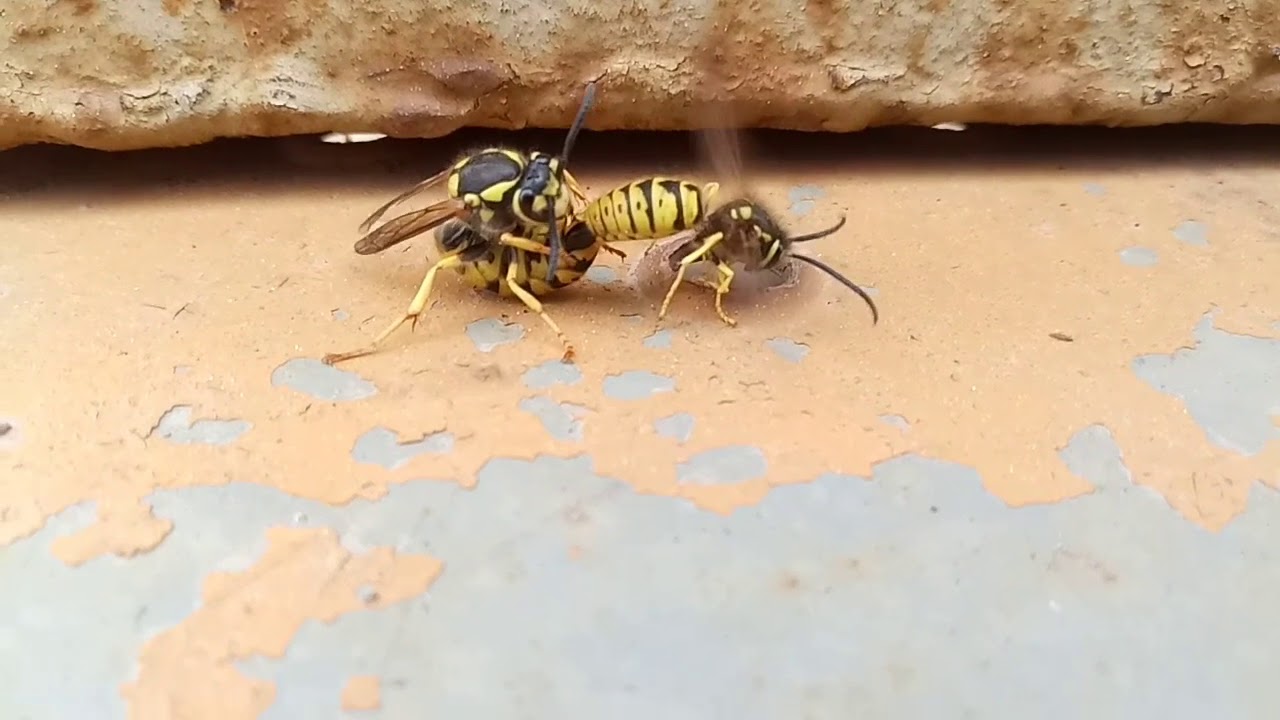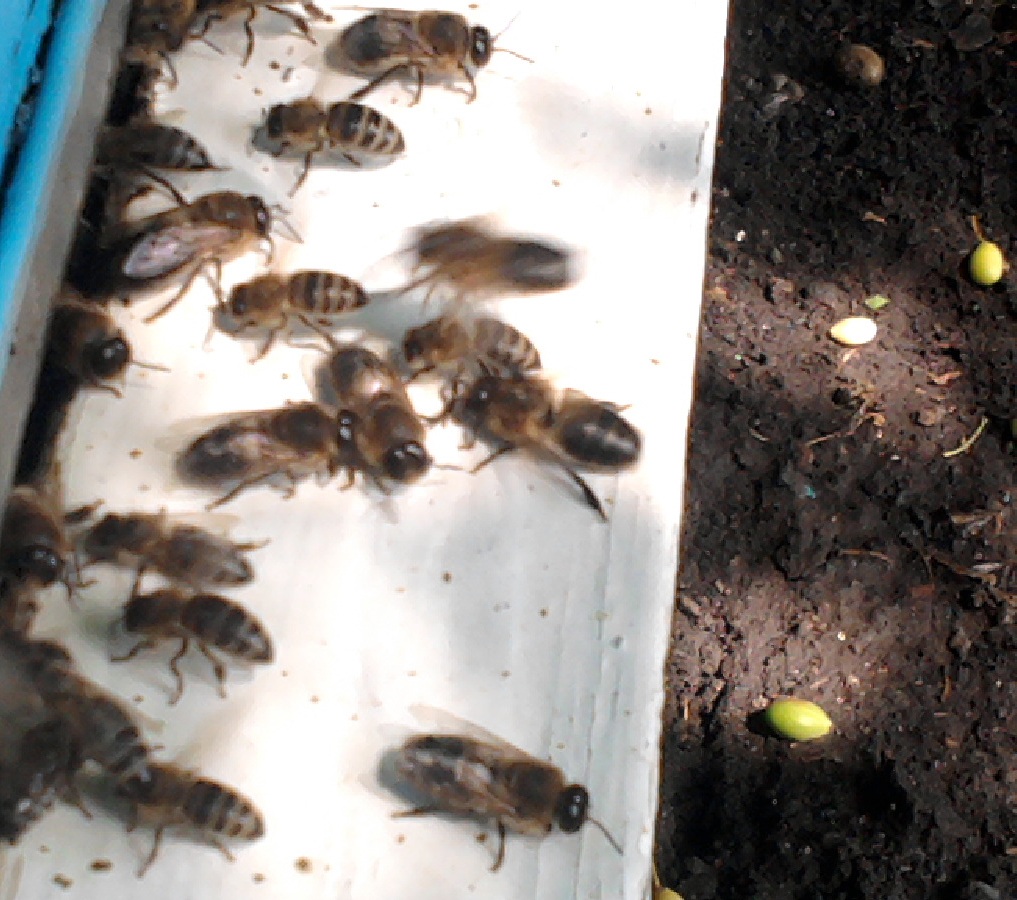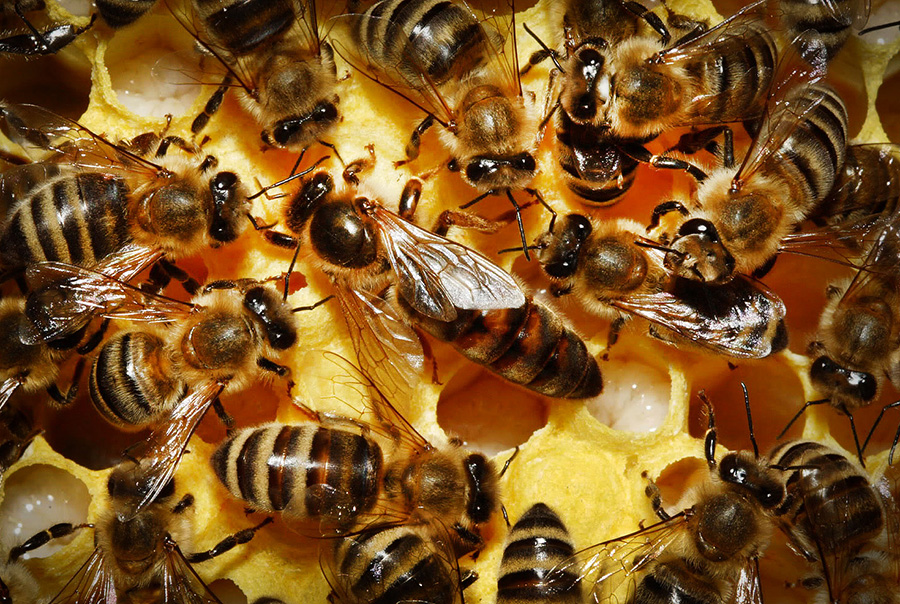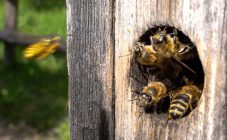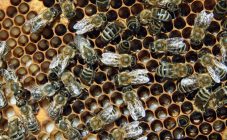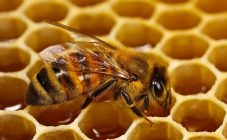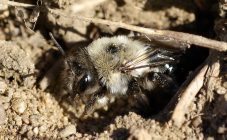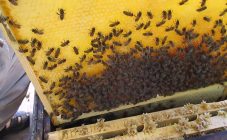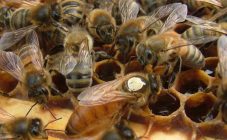Content:
The average layman is little interested in the question of how bees breed. This is an urgent topic for beekeepers. If experienced beekeepers already know how the process takes place and are able to regulate it by increasing the number of families, then beginners still have to learn everything.
Reproduction
In all living nature, there is a program for reproducing their own kind. In bees, this process is subject to its own special laws. Insects are not just born and develop - at a certain moment the family is divided, and the resulting swarm needs a new house.
Beekeepers have learned to influence the natural course of events by taking the reproduction of bees in the apiary into their own hands. Even special techniques have been developed to increase the land.
Naturally
The birth of a new family in natural conditions occurs in two ways:
- the queen mates with drones several times, lays eggs in combs, and new bees grow from them, replenishing the family;
- under the influence of certain factors, the bee colony is divided, the swarm, led by the queen, leaves the hive in search of a new shelter; some of the bees remain in the old house with their queen.
Once in a new place, each member of the community begins his duties, which are genetically inherent in them.
Artificial way
Experienced beekeepers, observing the reproduction of bee colonies, decided to regulate the swarming process. The artificial method allows not only to preserve the separated swarm, but also to increase the number of insects in the apiary.
Intervention in the natural process (without harming the bees) is carried out according to one of 3 methods. Each of them has its own characteristics.
Artificial breeding of bees
| Method | Features: |
| Layers | At the preparatory stage, the bees raise a new queen and prepare for the flight. The swarm will be headed by a barren womb. The essence of the beekeeper's intervention is to transfer several frames with insects sitting on them to a new house. After the flight bees return to the new nest, a young queen is launched |
| Division | In this embodiment, the new hive should be as identical as possible in design and color to the old one. The houses are placed at an equal distance from the place where the former nest was, from which half of the frames were transferred to the new hive. The flying bees are automatically distributed evenly over 2 houses. The beekeeper will only have to add a young queen to the new family |
| Raid on the queen | When deciding how to breed the bees, the old queen is moved to a new hive. In this case, the old house with part of the insects is transferred to another place, it is replaced by a new one. Left without flying bees, the brood in the old nest makes every effort to develop quickly |
Mating in bee colonies
The bee's birth process begins with the mating of the queen with the drones. To perform this action, the uterus needs to leave the hive. She will do this several times until the oviducts are filled with sperm. The uterus can coalesce with an average of 6-8 partners.
Having met a drone in the air at a height of 10 meters from the ground, the bee mates with him, and both insects go down.Separation occurs when the contents of the drone's seminal vesicles are pumped into the uterus.
Mating with the last drone ends up badly for him. The uterus strongly grips its chamber, which is why the copulatory organ of the male is detached. This appendix serves as a kind of cork that prevents the outflow of valuable material outward. The uterus is freed from such a "sign of fertilization" already in the hive, after a few days.
How bees are born
Having figured out how bees mate, many will also be interested in how they are born. Despite the difference in breeds, the process of birth is the same for all bees. In their development, they go through several stages, eventually dividing into workers and drones.
Embryos consist of a nucleus surrounded by protoplasm and covered with a shell. The egg is in this state for 3 days. At the transition to the larval stage, the mechanism of brood division into hierarchies is activated. Nursing bees control it, choosing their own food for each individual. The duration of the subsequent stages in development depends on this.
Bee development stages
| Stage | Amount of days | ||
| for the uterus | working bee | drone | |
| Larva | 5 | 6 | 7 |
| Prepupa | 2 | 3 | 4 |
| Chrysalis | 6 | 9 | 10 |
The uterus emerges from the pupa earlier than other individuals - 16 days after laying the egg. Working bees will need 21 days, the drone will emerge from the pupa on 24 days.
Even before the egg enters the larval stage, the nurses put some milk into the cell - it softens the shell. This remedy facilitates exit and is a breeding ground. The food is so high in calories that in 3 days the larva manages to increase in size by 250 times.
On the 4th day, there is a division in the diet:
- drones and worker bees are fed unlimited bee bread and honey until the cells are sealed;
- if there is a need for a new uterus, then several larvae are given royal milk, while rebuilding their honeycombs.
At the pupa stage, certain metamorphoses occur with the bees. This is especially true of the uterus. Under the influence of milk, her genitals develop, and a working proboscis does not grow. Also there are no wax glands and baskets on the legs. But these organs develop well in worker bees.
Despite the fact that drones are fed in the same way as workers, their development is directed towards the reproductive system. This is predetermined by nature - all eggs inside the uterus are drone eggs. They turn into workers only in the process of fertilization.
How bees give birth
To understand how bees give birth, you need to delve into the specifics of their physiology. In insects, everything happens a little differently than in animals. If mammals copulated, then fertilization began immediately. In bees, this stage is postponed for a certain time.
At the time of mating, a significant number of eggs are already in the uterus. After copulation, up to 7 million sperm are accumulated in the seminal receptacle. Fertilization occurs at the moment when the uterus begins to lay eggs, she can do this throughout her life, giving out the available "gene pool" in batches.
The absence of sperm in the uterus does not prevent the bee from being born. The infertility of the brood is genetically predetermined - this is how drones are born.
Clutch of eggs
The uterus lays an egg in each cell, attaching it with one end to the bottom. The embryo stands strictly upright. The egg begins to slope slowly and after 3 days is in a horizontal position. By the angle of inclination, you can determine on what day the masonry was made.
The labor process goes on continuously, while every 20 minutes the uterus is suspended for rest. The Queen's retinue looks after her and feeds her constantly.
Knowing the peculiarities of the development of insects, having studied the question of how bees are born, it is easier for the beekeeper to breed honey collectors. It is necessary to reproduce them artificially, since bees sometimes die under the influence of natural factors.
